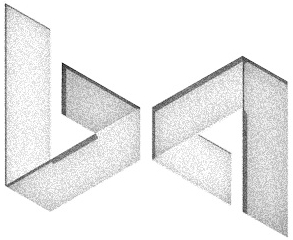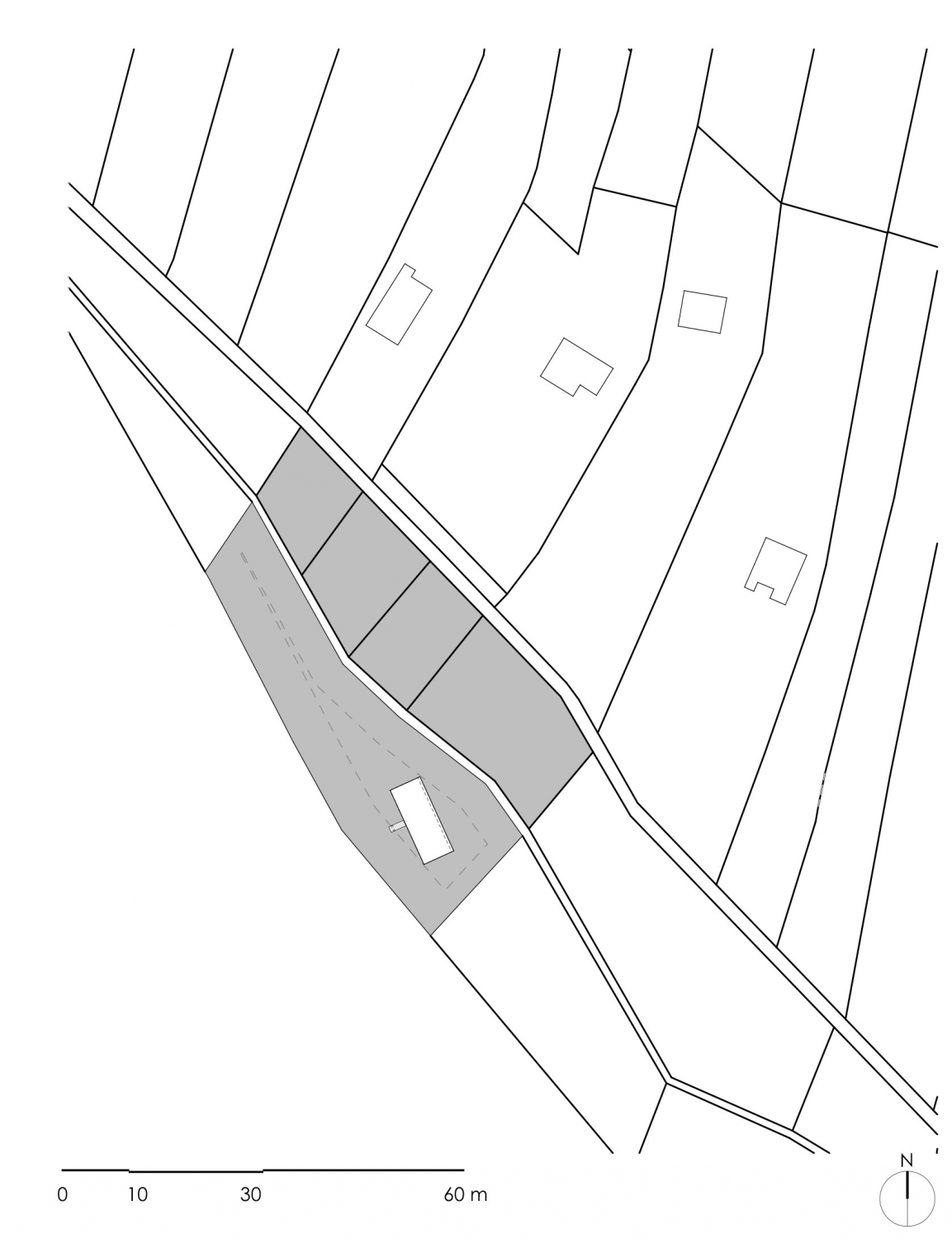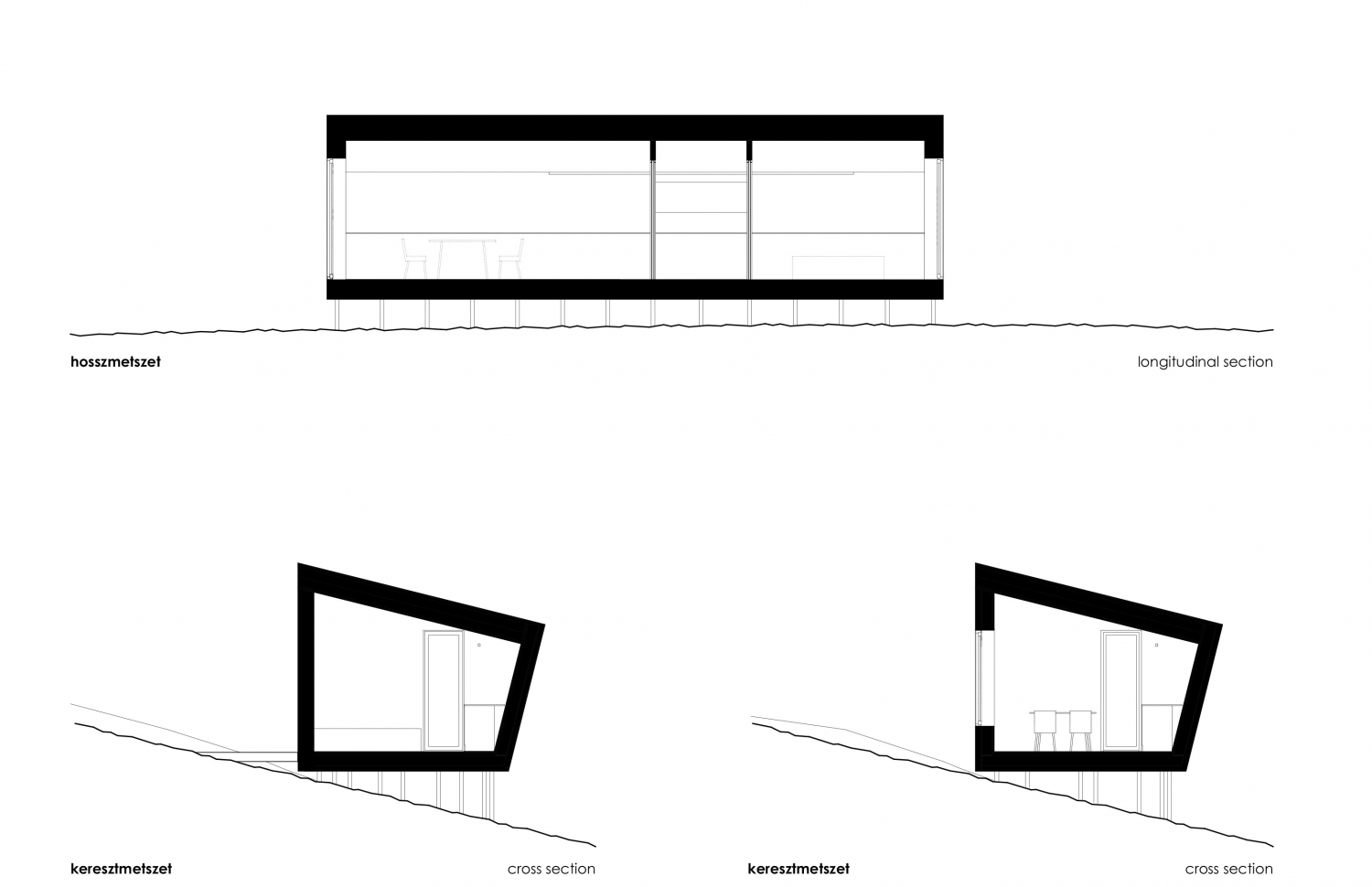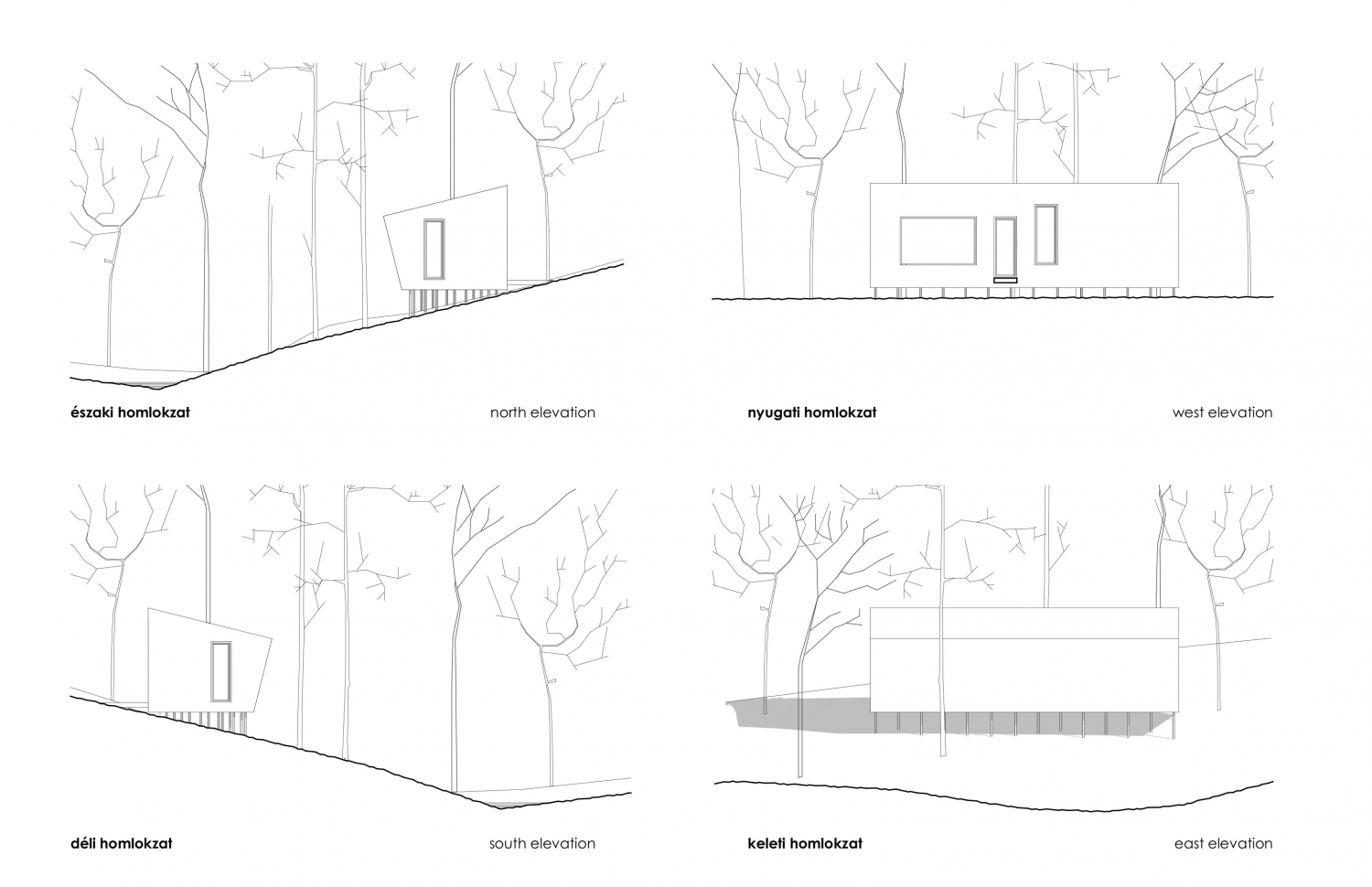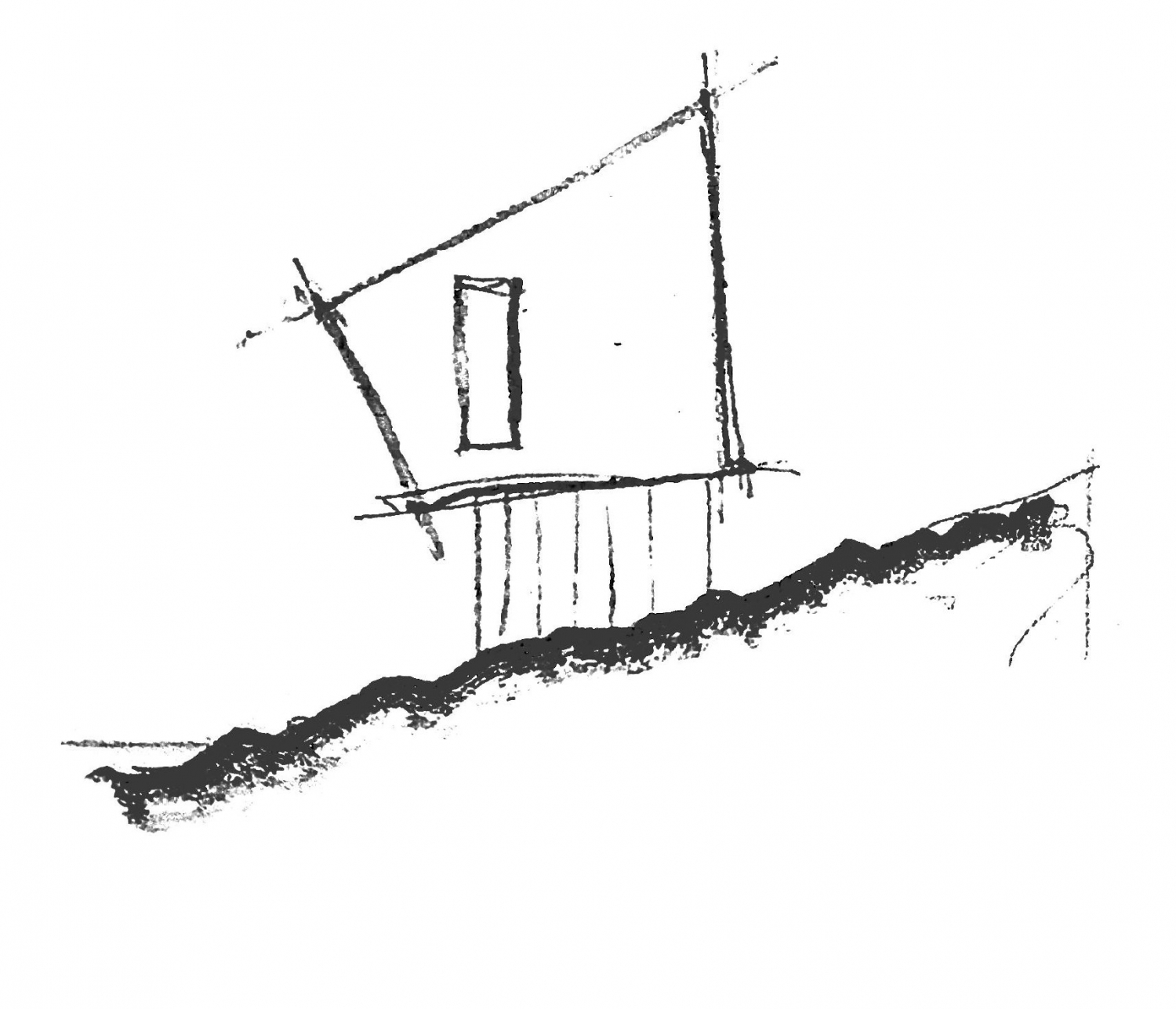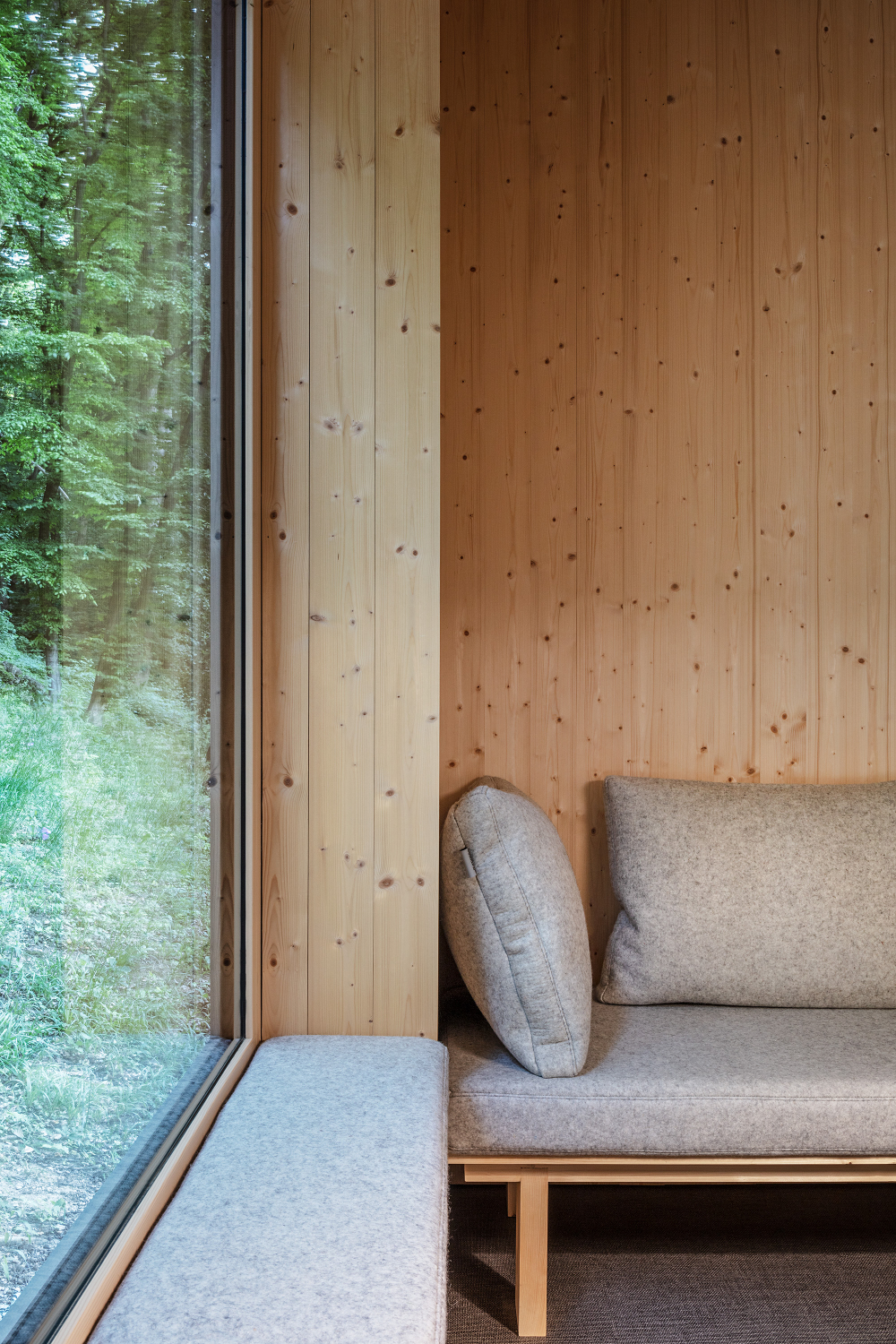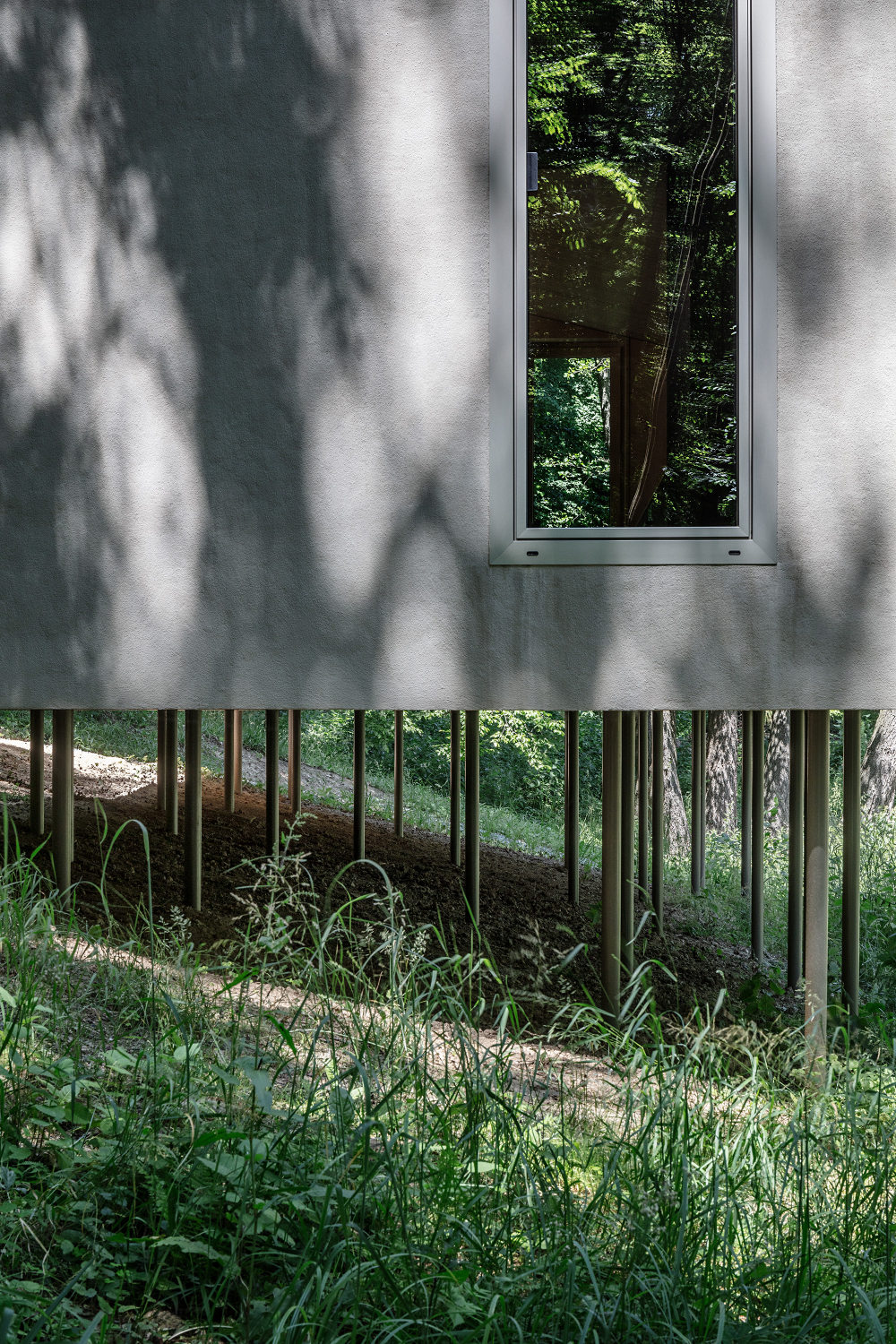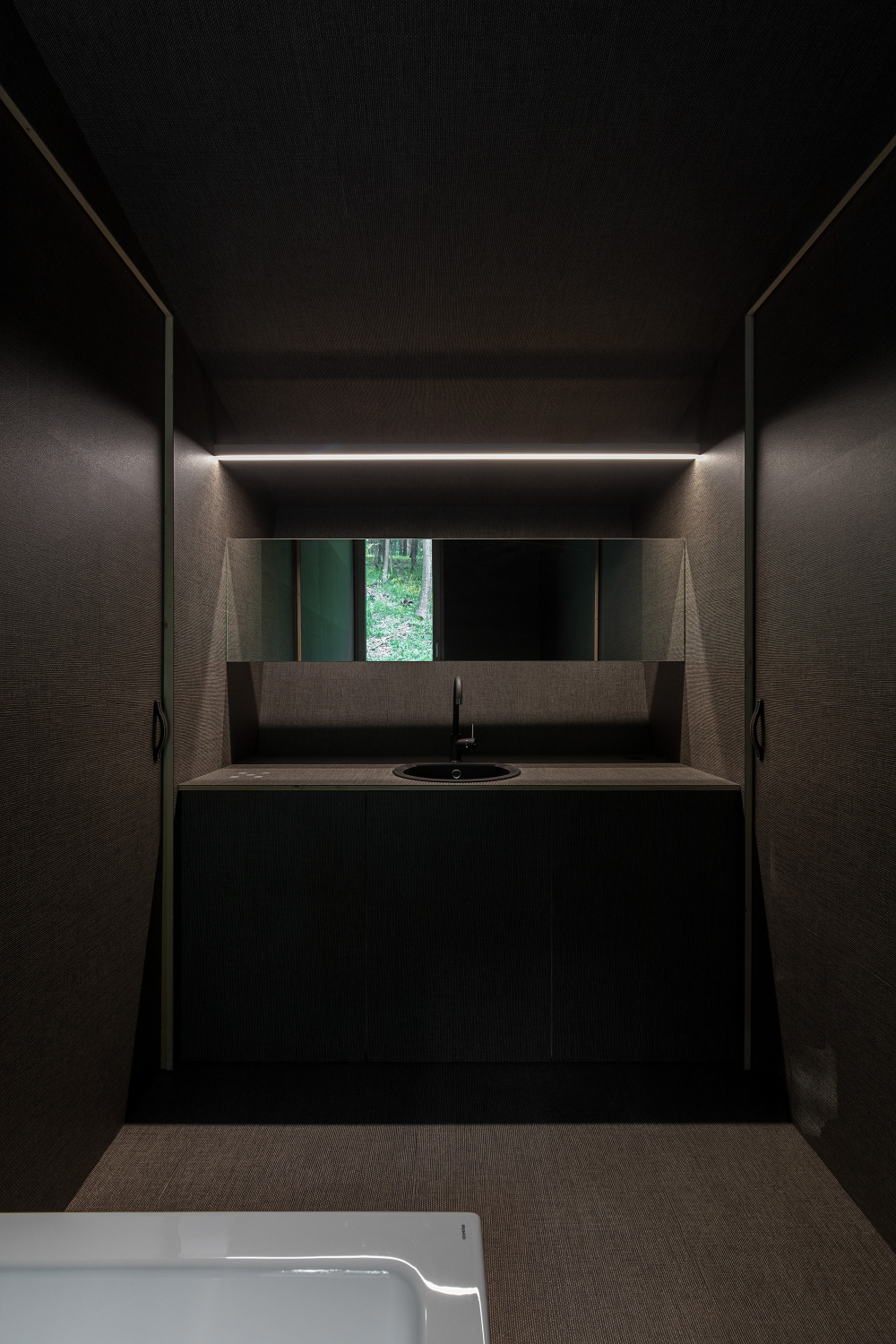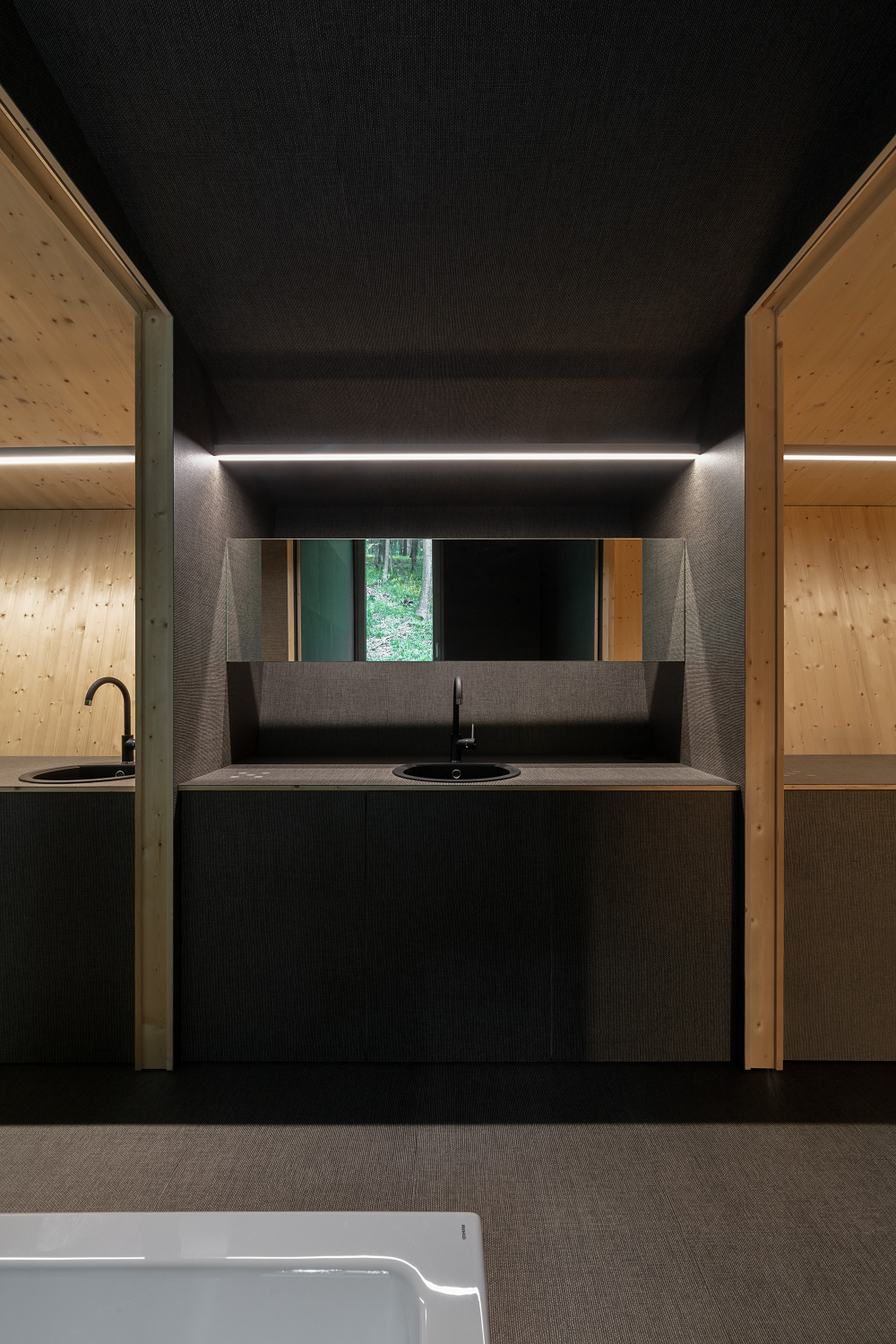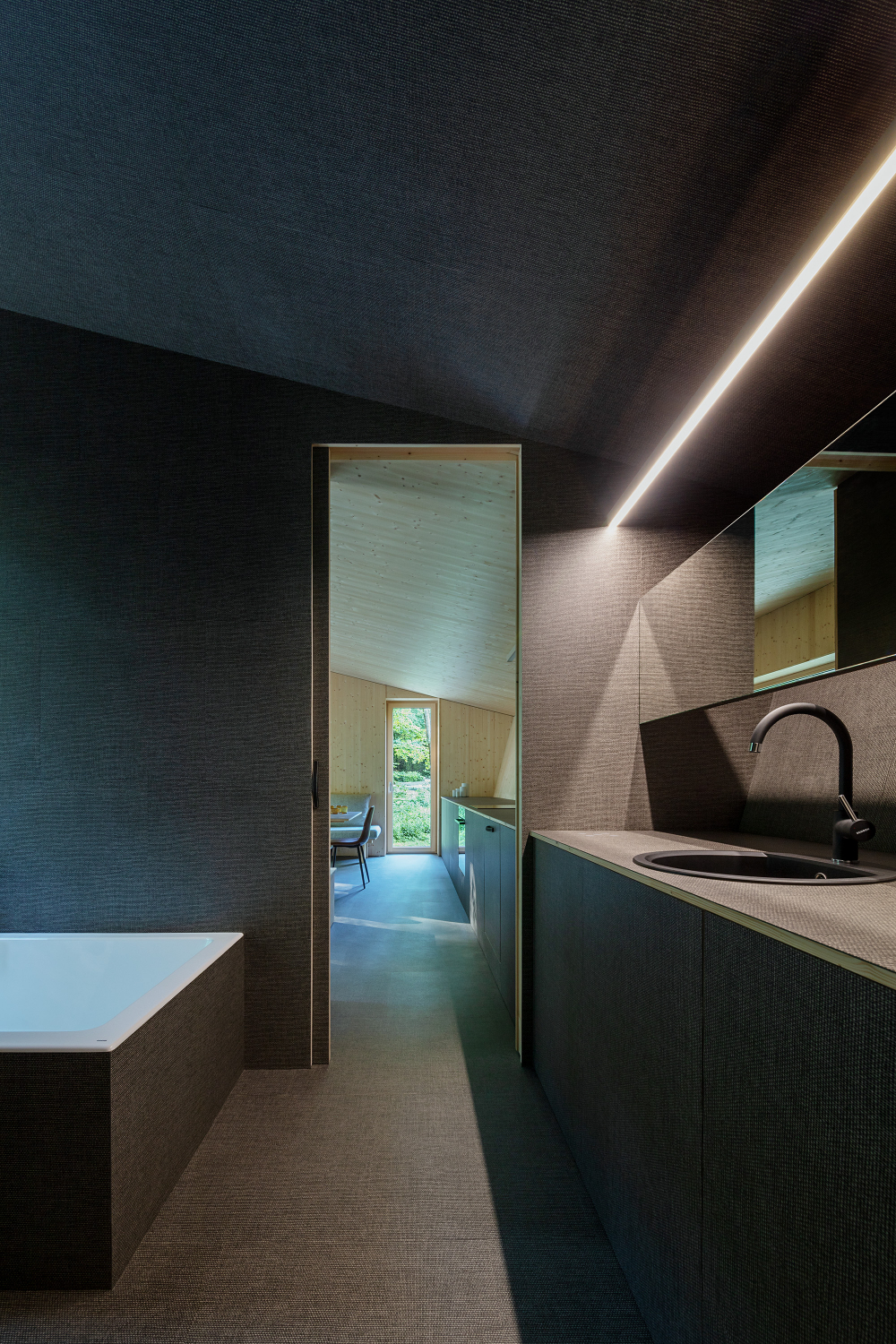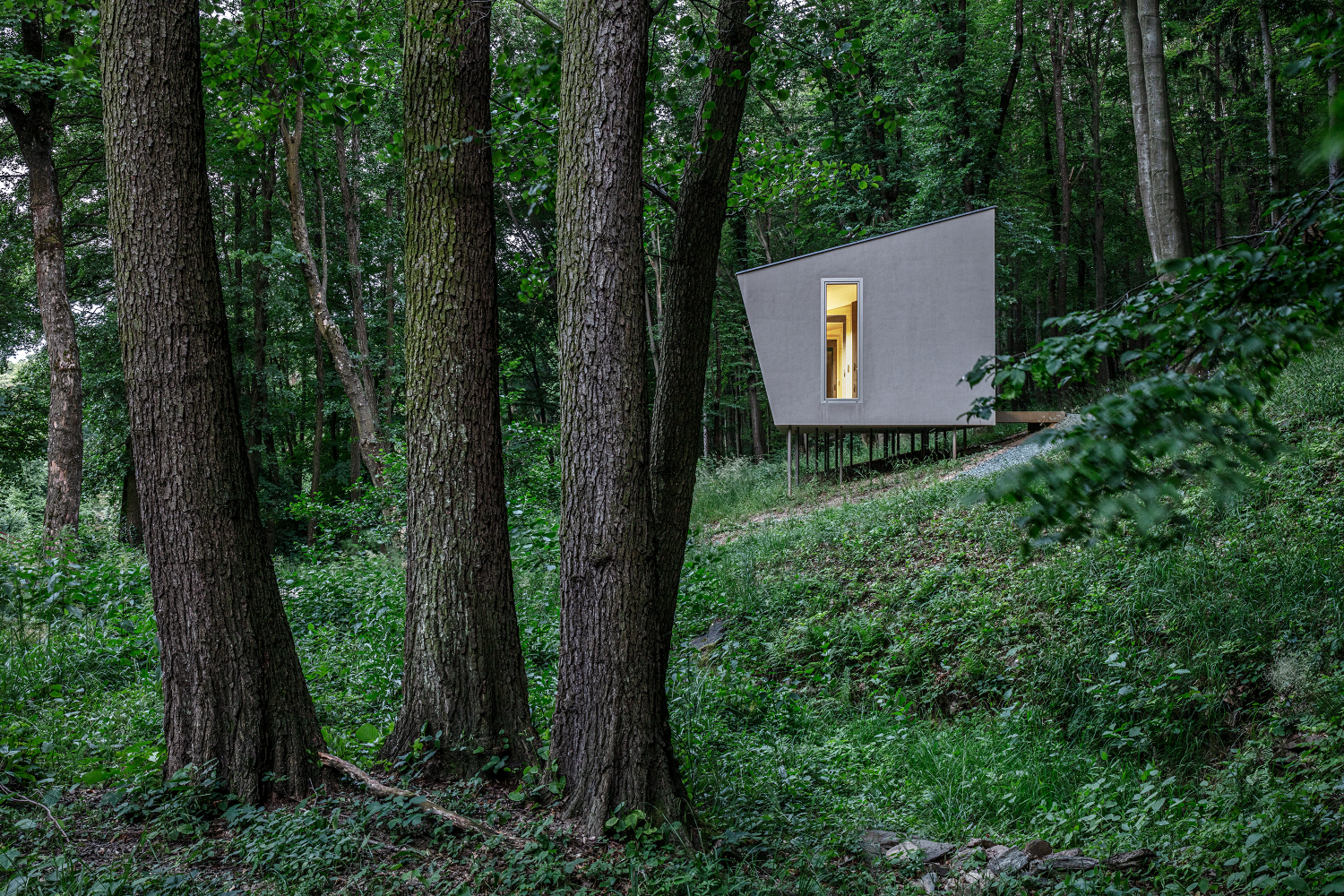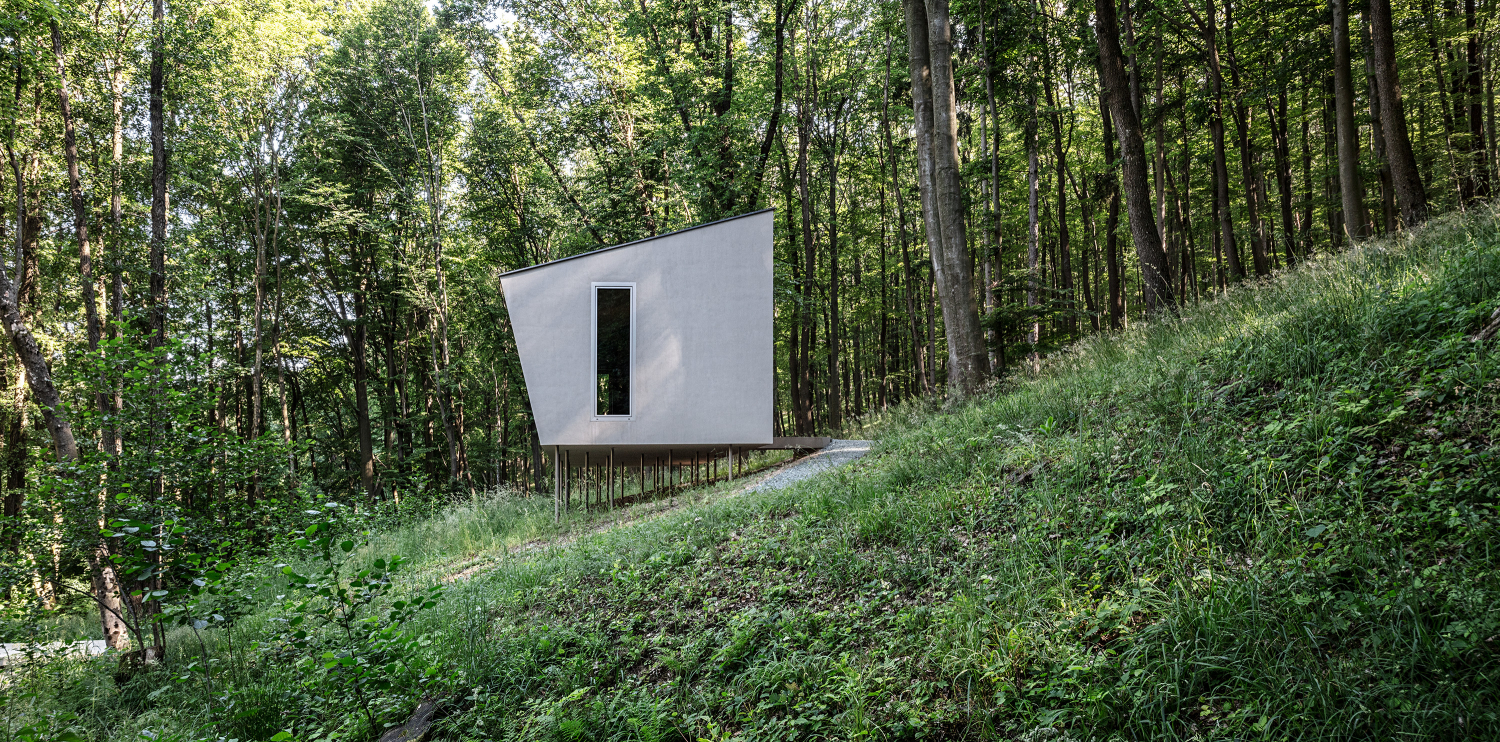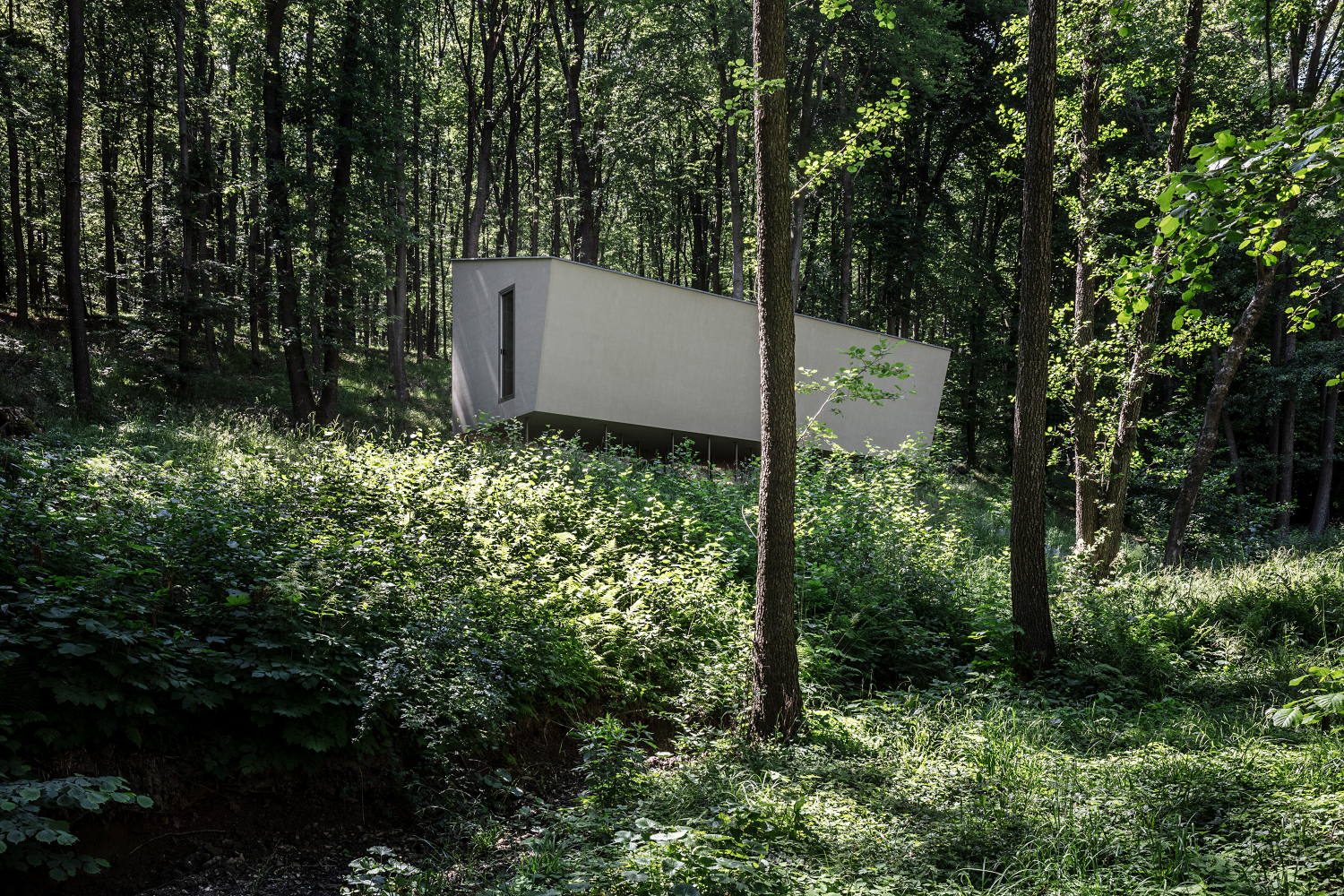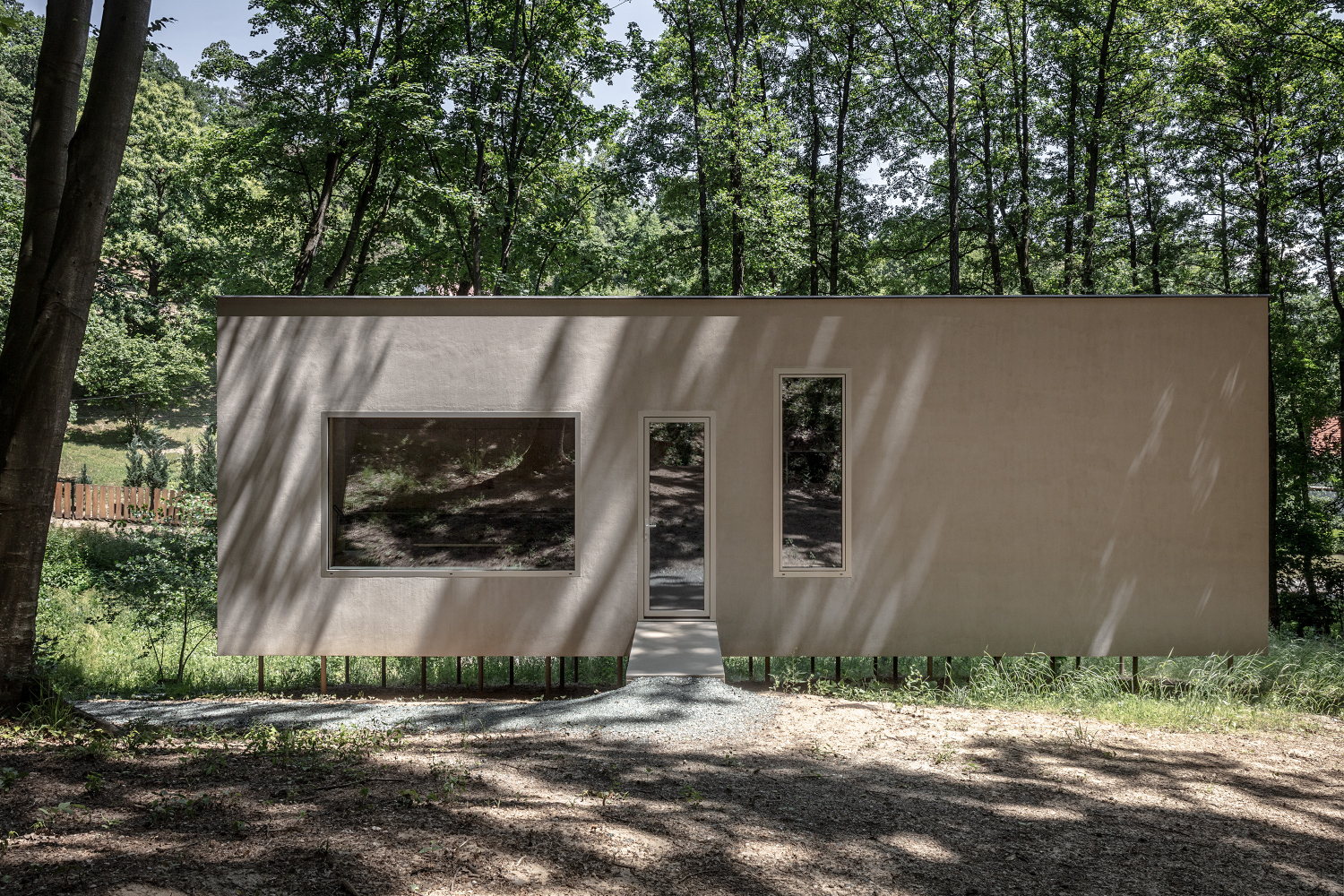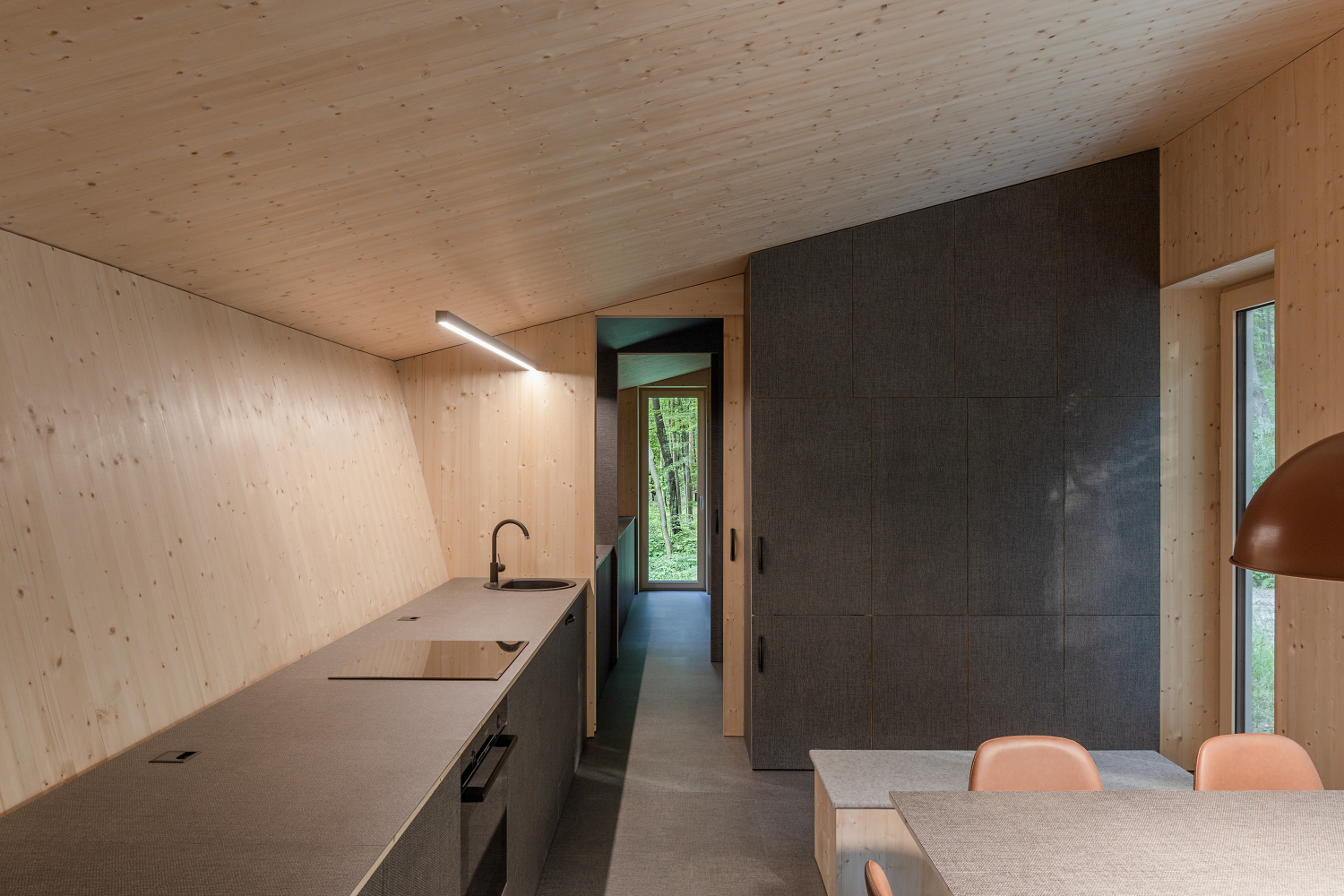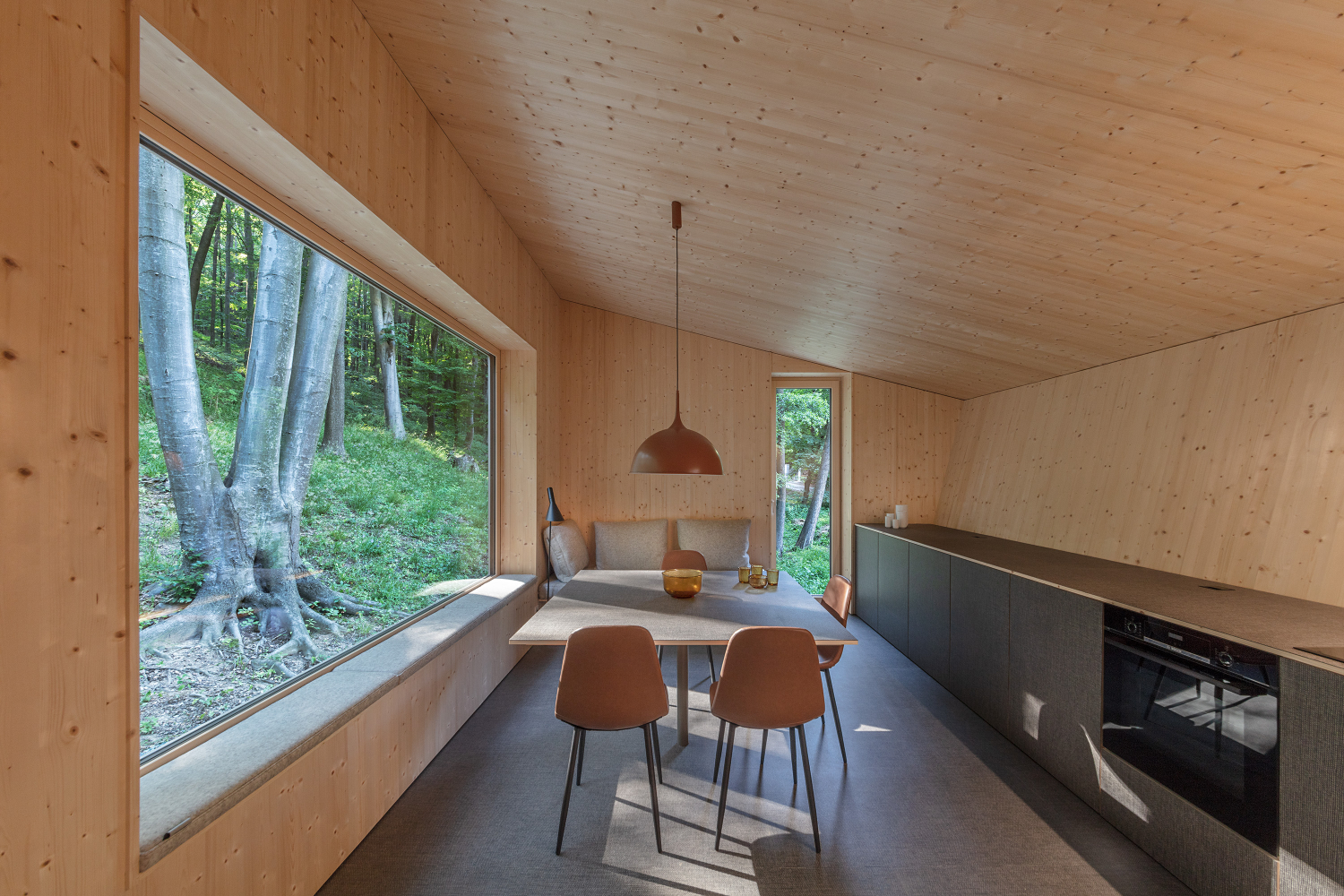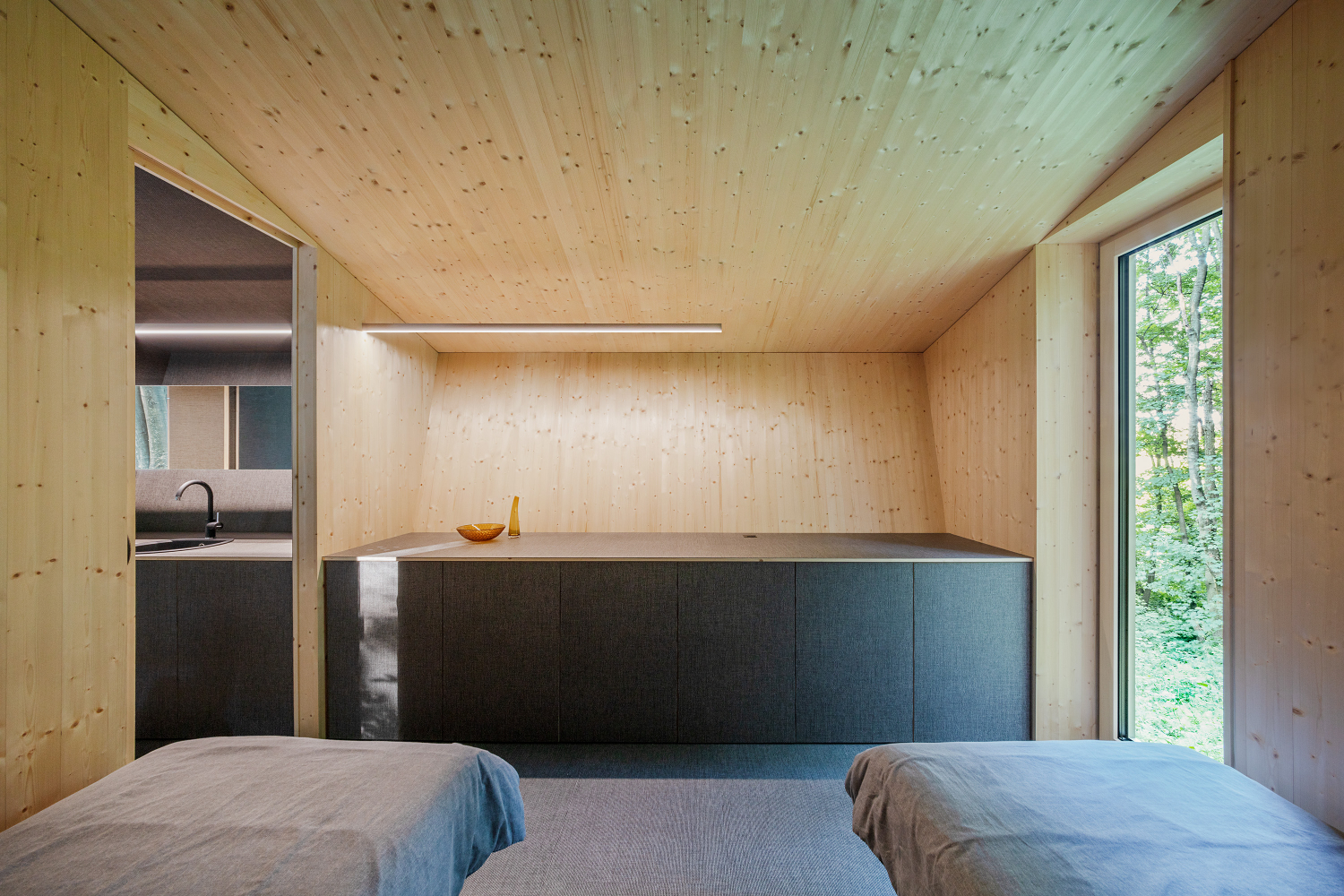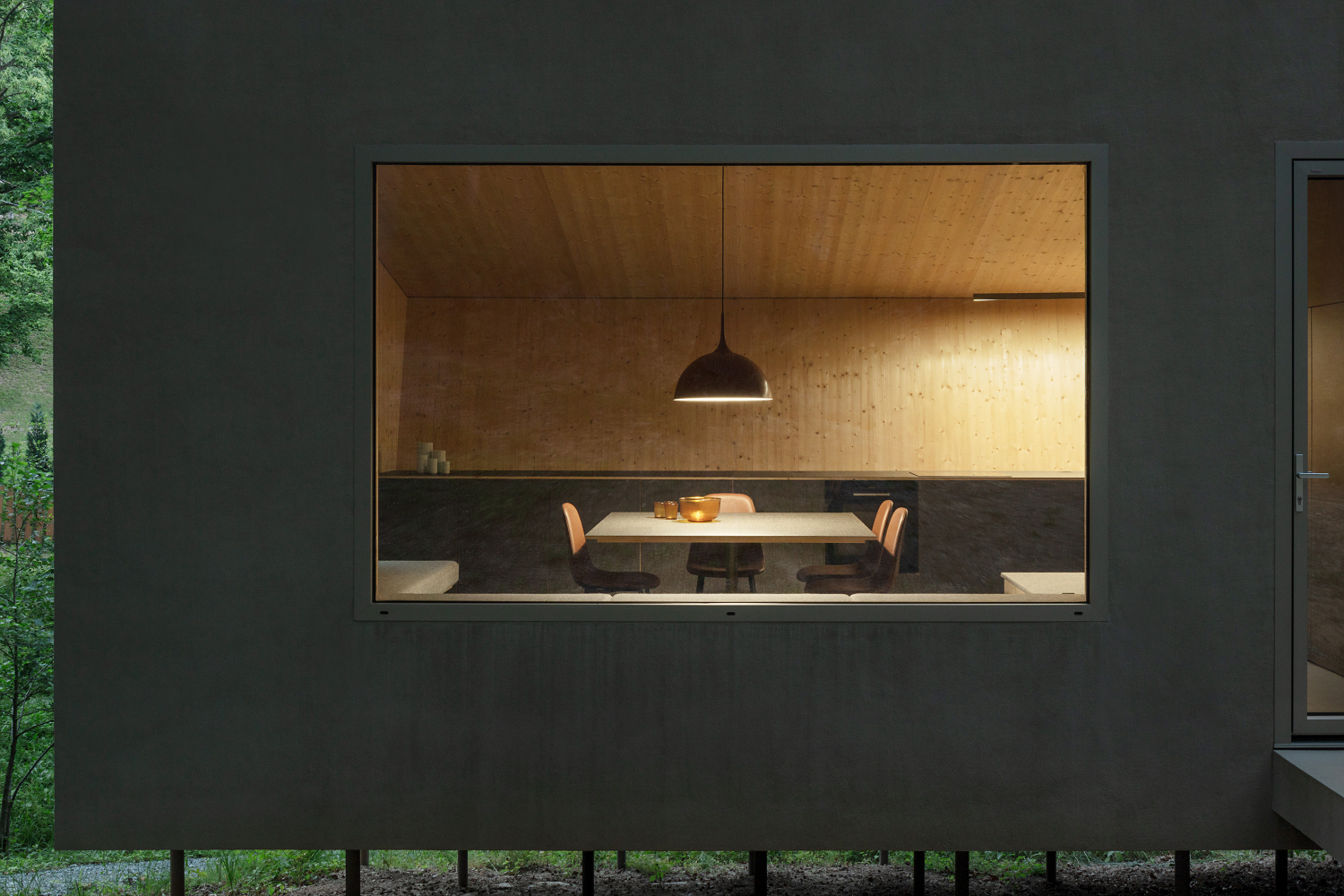Cabin Moss
“Measure twice, dig once” - this was the driving force behind the smart foundation idea that Attila Béres and Attila Hideg figured out to protect the roots of the gigantic trees of the site. At the same time, their idea made it possible to sketch up a cabin that can be built by one person. Believe or not, this little hideaway had been created by owner and builder Attila Hideg all alone. His enthusiasm for creating wooden structures raised attention already in 2013 when he had built Hideg House in Kőszeg, Hungary. The house's success inspired him to test his skills again: after working together on the renovation of the medieval Niczky Apartment, he teamed up with Béres Architects's team for a third time to create a tiny but comfortable cabin among hundred-year-old trees of Alpokalja, the feet of the Alps.
“Our task was to create a little hideaway space of about 40 m2 without any compromise regarding living comfort, at the same time we respected the natural values of the site at extraordinary levels”, says architect Attila Béres. The exceptional location of the house that sits right on the edge of untouched forest landscape and the road and utility network of human inhabitation inspired us to create a building that floats above the terrain. Thin stilts are carefully located so that we could keep and protect the roots of the surrounding trees. No need for any excavation or filling with machines that ruin the natural context. The structural system of the house had been created so that it offers some flexibility for this effort at realization.
The cross section of the building, two right angles facing each other, creates great visual contacts with the surrounding sloped landscape. It creates possibilities for taller windows and helps to capture the view toward the endless forest landscape.
As the building’s form is very simple and the single material used on the facade makes it even more object-like, the arrangement and appearance of the windows plays an important role. The windows create a playful motif, a unique and recognizable look. There is a sharp contrast between the inside and outside of the building. Warm and cozy interior is wrapped in a rough surface that lets the forest create colours and patterns after its own taste.
The focus of interior spaces faces the natural surroundings. It turns its back towards the few neighbours and the end of the dead-end street. This way the sides containing openings needed a careful design and some “flavouring”. Our suggestion was a combination of practical solutions, a reflection to the views that the sloped landscape offers.
One of the project’s design cornerstones was the effort of staying small. No unnecessary spaces, no leftovers, no wasted square metres. This is the starting point of being environmentally friendly. The use of high-end building materials and products with great characteristics helps to reach the same goal, and at the same time, it helps to represent the philosophy of our care about sustainability. Heating and hot water supply is solved 100% electrically. The consumption is extremely low because of the mindful design of the insulation system and detailing. As a result of careful design and exceptional microclimate of the location, there is no need for air conditioning or forced ventilation in the building. All cables and pipes remain invisible even on the underside of the building.
